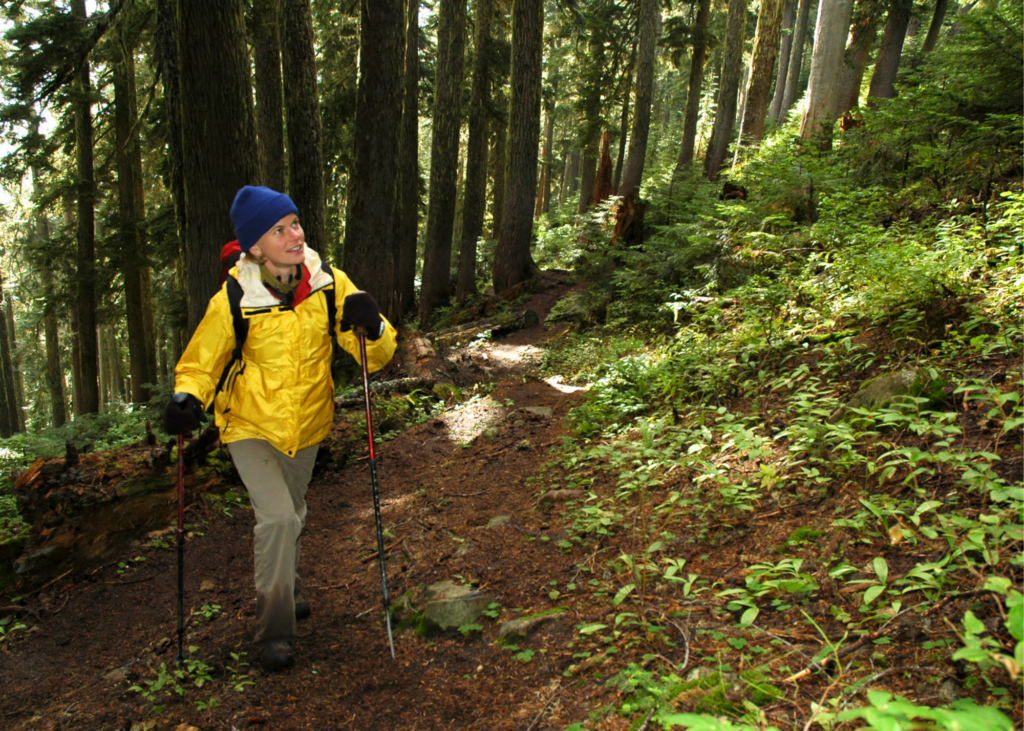With Wisconsin Land Trust Days in full swing, there are tons of opportunities to get out and explore some of Wisconsin’s most unique parks and trails! September is a beautiful month full of blooming wildflowers, bustling insects, and abundant wildlife. But knowing Wisconsin weather, we could see anything from searing heat to freezing sleet this month! How can you prepare to enjoy the outdoors through anything the weather has to throw at you?
Having the right outfit makes a huge difference in how comfortable you’ll be out on the trail. When you dress for success, remember the childhood ditty: head, shoulders, knees, and toes. Each need special care.
Protect Your Head: Every season calls for a hat—they’re as important as hiking shoes! Your scalp is vulnerable to sunburn in summer. A shady brim paired with sunglasses keeps your eyes safe from the sun. If you’re hiking in the heat, try dunking a baseball cap in water before you wear it. The evaporating water will help keep you cool.
Mind Your Core: You’ve heard this before, but it’s worth repeating: layers, layers, layers! Your torso is your core and has a huge impact on your overall temperature. You’ll get hot when you hike, and cool off when you rest. On treks in colder weather, bundling up too much will make you sweat, which will then make you chilled – the opposite of your goal!
Your base layer should always be a sweat-wicking layer, such as a synthetic sport shirt or a soft wool sweater. Cotton is water-absorbent and should be avoided. For the next layers, choose fleece and a breathable rain jacket. Try to avoid bulky items that can’t be easily stuffed in a backpack when you want to take them off.
Speaking of stuffing things in a backpack, you can also increase your comfort by bringing sunscreen, bug repellent, and snacks with you on the trail. And of course, water is a must, no matter the season!
Be Nice to Your Knees: It may be tempting to go out in shorts in hot weather, but don’t forget to check your terrain. Walking through raspberry brambles or scrambling up rocks is no fun if you’re getting scraped up. Long pants tucked into socks can also help keep away unwelcome hitchhikers like ticks. Jeans are sturdy, but since they’re made with cotton, they’ll soak up rain or dew. If weather conditions are wet, opt for synthetics. For very cold hikes, a pair of leggings, tights, or thermal layer worn under pants can help keep you much warmer.
If you’re worried about stress on your knees or ankles, consider adding a pair of trekking poles to your hiking ensemble. These offer extra support to your joints and can help add stability on tricky terrain.
Enclose Your Toes: The shoes you choose also depends on terrain, weather conditions, and personal preference. For dry days on relatively flat trails, sneakers or other closed-toed shoes will do just fine. Hiking boots offer better traction in wet or steep conditions, and you may prefer to wear them all the time if you like having more ankle support.
If you suspect that you’re going to be hiking on a trail with puddles, opt for waterproof footwear – walking around puddles to keep your feet dry inadvertently widens the trail and impacts surrounding habitat. And when it comes to socks – we recommend avoiding cotton, which retains moisture. Wet feet are miserable, and can be dangerous in the cold.
Share your own favorite hiking fashion on social media using #WILandTrustDays and #HaveFunOutside!



